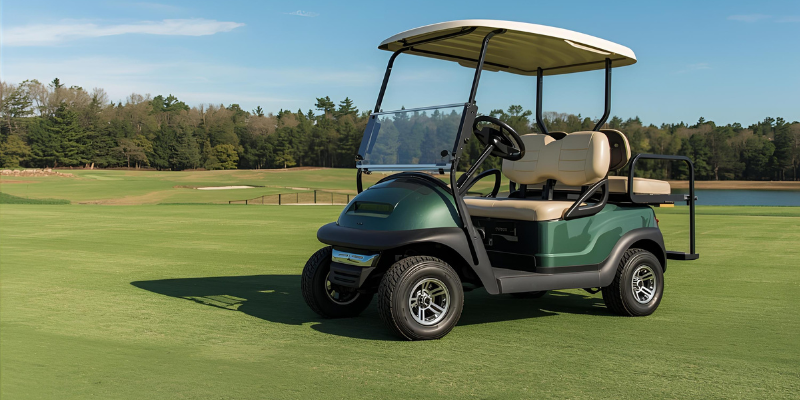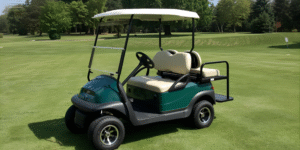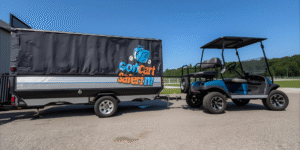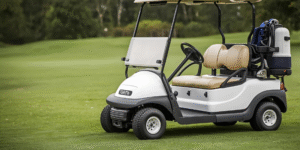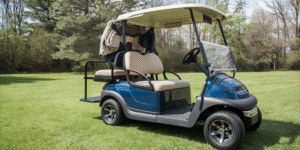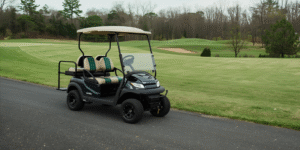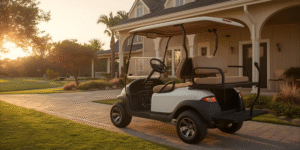Few things are more frustrating than buying a brand-new golf cart and discovering it won’t hit properly. Whether you’re on the course, cruising around your community, or taking a ride with family, your golf cart should respond smoothly when you press the pedal. But what happens when it doesn’t move, loses power, or simply fails to hit at all?
This is a surprisingly common issue with both new and slightly used golf carts. Even though modern carts are designed for reliability, there are still several reasons why your cart may struggle to perform. Fortunately, many of these problems have straightforward solutions once you understand how the system works.
This beginner-friendly guide will walk you through the possible reasons why a new golf cart is not hitting and how you can fix them effectively.
Understanding How a Golf Cart Hits
To understand why a cart might fail, it’s important to know what “hitting” means in the golf cart world. When owners say the cart isn’t hitting, they usually mean it’s not moving forward, lacks acceleration, or fails to engage the motor.
A golf cart works by using batteries or a gas engine to supply power to the motor, which then transfers energy to the wheels. If there’s a problem anywhere in this chain battery, wiring, motor, controller, or mechanical parts—the cart won’t respond correctly.
Common Causes for a New Golf Cart Not Hitting
Battery Issues
Even a new golf cart can have battery problems. Sometimes the batteries aren’t fully charged when delivered. In other cases, a loose connection or defective unit can prevent proper power flow.
Batteries are the heart of an electric cart. If they’re weak, the cart will not engage. Checking voltage levels, connections, and overall health is the first step in diagnosing hitting issues.
Charger or Charging System Faults
If the charger is not functioning correctly, the cart may appear fully charged but fail to deliver power. A new cart could have a defective charger, or the outlet being used may not provide consistent current.
Solenoid Problems
The solenoid acts as the link between the battery and motor. If it fails, the motor won’t receive the energy it needs. A clicking sound without movement often points to a solenoid issue.
Motor Controller Failures
The controller regulates how much power flows from the batteries to the motor. If it malfunctions, the cart won’t accelerate properly. This is a common cause in new carts with electronic controllers.
Key Switch or Ignition Issues
Sometimes the simplest issues are overlooked. A faulty ignition switch can prevent the cart from starting at all. Even new switches can occasionally have wiring faults.
Loose or Damaged Wiring
A loose cable or damaged wire may interrupt the electrical flow. New carts are sometimes shipped with connections that loosen during transport. Checking for secure, corrosion-free wiring is critical.
Speed Sensor or Throttle Problems
Many modern carts use speed sensors and throttle controls to regulate power. If the sensor isn’t aligned or the throttle signal is weak, the cart may not hit as expected.
Brake or Safety Interlocks
Some carts include safety features that prevent movement unless conditions are met. For example, the brake may not be fully disengaged, or a safety switch may be faulty.
How to Fix a New Golf Cart That Isn’t Hitting
Step 1: Inspect the Batteries
Start with the basics. Check that the batteries are fully charged and connections are tight. Use a voltmeter to test output. Even new batteries can fail, so don’t rule this out.
Step 2: Examine the Charger
Verify that your charger is working properly. Plug it into another outlet to test. If the charger is defective, replace it under warranty.
Step 3: Test the Solenoid
If you hear a click when pressing the pedal but the cart doesn’t move, the solenoid could be the problem. Testing with a voltmeter will confirm if it’s passing power correctly.
Step 4: Check the Controller
If batteries and solenoid are fine, move to the controller. This may require a professional test, but signs of failure include inconsistent acceleration or no movement at all.
Step 5: Look at the Ignition Switch
Try jiggling the key or inspecting wiring around the switch. Replacing a faulty switch is usually inexpensive and straightforward.
Step 6: Inspect Wiring and Cables
Look for loose, frayed, or corroded wires. Ensure all connections are secure and clean. This step often solves hitting problems in new carts.
Step 7: Evaluate Sensors and Throttle
If the cart powers on but doesn’t accelerate properly, sensors may need calibration. Checking the throttle input with diagnostic tools can identify the issue.
Step 8: Review Safety Features
Ensure the brake is released and all safety switches are working. Sometimes, carts come with parking brakes or interlocks that need proper adjustment.
Preventing Future Issues
Even with a new cart, regular care helps prevent problems:
- Keep batteries charged and maintained.
- Store the cart in a dry, cool environment.
- Inspect wiring monthly for wear or looseness.
- Follow manufacturer maintenance schedules.
- Use the charger recommended for your cart model.
These habits reduce the risk of hitting issues and extend the life of your new golf cart.
When to Call a Professional
While some fixes are simple, others require specialized tools. If you’ve checked the basics but your cart still isn’t hitting, it’s best to contact a certified technician. This ensures your warranty remains intact and prevents accidental damage.
Conclusion
A new golf cart not hitting can be frustrating, but the cause is often something simple like discharged batteries, faulty wiring, or solenoid issues. By inspecting the power system, controller, and safety features, most problems can be identified and fixed quickly. Regular care and maintenance will also prevent future problems, ensuring your cart delivers the performance you expect.
If your golf cart isn’t hitting and you want expert help, contact us today for professional service and support.
FAQs
Why is my brand-new golf cart not moving?
It could be a simple issue like discharged batteries or a loose wire, or a more complex fault with the solenoid or controller.
Do new golf cart batteries need charging?
Yes, most new carts are delivered with partially charged batteries that should be fully charged before use.
How long should new batteries last in a golf cart?
Lead-acid batteries typically last 3–5 years, while lithium batteries can last up to 10 years with proper care.
Why does my cart click but not move?
This usually points to a solenoid issue where power isn’t being transferred to the motor.
Can I fix a non-hitting golf cart myself?
Some fixes, like tightening cables or checking the charger, are simple. But for controller or motor issues, professional help is best.


